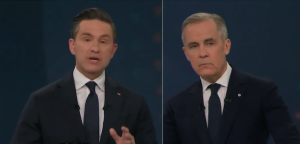In its November 2009 determination in Maritime Fence Ltd. v. Parks Canada Agency, the Canadian International Trade Tribunal awarded that the complainant lost profits after finding that the government awarded a contract to a non-compliant competing bidder.
The case dealt with a tender call for guardrail removal and sign post installation in the Banff, Kootenay and Jasper national parks. The Tribunal determined that the competing bidder had submitted contradictory pricing information which rendered its bid non-compliant and incapable of acceptance. It also found that the government’s attempt to “clarify” the pricing discrepancy after the bid submissions constituted bid repair in violation of the Agreement on Internal Trade.
With respect to the contradictory pricing information, the Tribunal found that pricing was a material term of the tendering process and that the uncertainty created by the pricing error rendered the bid incapable of acceptance. As the Tribunal concluded, when left with more than one possible interpretation regarding a price offer, and having no way to determine which of the two interpretations were correct, the government was not within its rights to seek further clarification and was compelled to reject the bid.
According to the Tribunal, seeking further information from a bidder to correct a material pricing error fell beyond the scope of permissible post-bid clarifications and breached the transparency and fairness obligations of the Agreement on Internal Trade:
Notwithstanding the foregoing, the Tribunal has recognized that post-close clarifications may be made as long as they do not amount to a substantive revision of the proposal. In Mechron Energy Ltd., the Tribunal stated as follows:
The Department submits that, after bid opening, it is entitled to seek, receive and take into consideration clarifications from bidders in finalizing its evaluation of the proposals. The Tribunal agrees with this position. It is important, however, to have a clear understanding as to what constitutes a clarification. The Tribunal is of the view that a clarification is an explanation of some existing aspect of a proposal that does not amount to a substantive revision or modification of the proposal.
However, in this case, the Tribunal is of the view that the changes made by LCS (Les Clôtures Spécialisées) to its “Bid and Acceptance Form” after the bid closing date did not amount to permissible clarifications.
The Tribunal considers that changing the lump-sum amount on the “Bid and Acceptance Form” cannot be construed as a clarification of some existing aspect of LCS’s tender, but rather constitutes a material change to a fundamental element of the tender. Parks Canada argued that there was no material change to LCS’s tender, given that the “Total Bid Amount” remained the same.
The Tribunal disagrees. While it is true that the “Total Bid Amount” remained the same, this was only made possible by changing some of the numbers for the “Total Bid Amount”, including the lump-sum amount. The Tribunal views these changes as substantive in nature.
Such a conclusion is, in the Tribunal’s opinion, consistent with the basic principle of transparency in the procurement process that is provided for in the AIT (Agreement on Internal Trade). Article 501 of the AIT reads as follows: “ the purpose of this Chapter is to establish a framework that will ensure equal access to procurement for all Canadian suppliers in a context of transparency and efficiency.”
The Tribunal therefore determined that the government improperly accepted a non-compliant bid and awarded the complainant lost profit damages. As this case illustrates, the post-bid “clarification” of material pricing errors can be a contravention of the trade treaty rules.
This article is extracted from his Government Procurement textbook published by LexisNexis Butterworths. Reach Paul at paul.emanuelli@procurementoffice.ca.











Recent Comments
comments for this post are closed